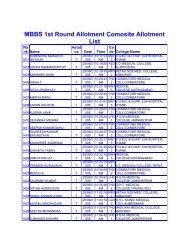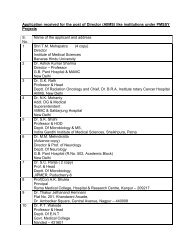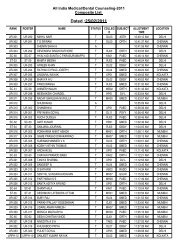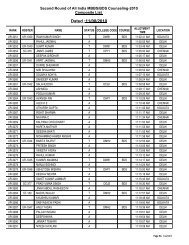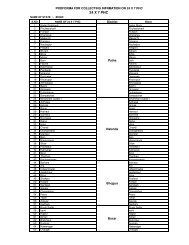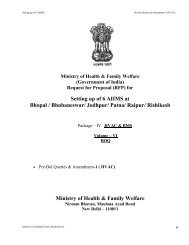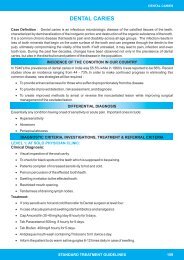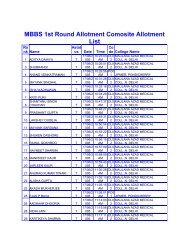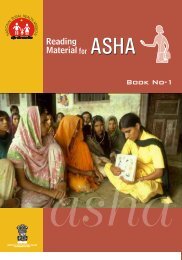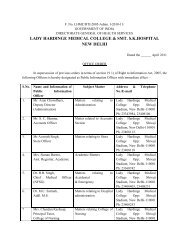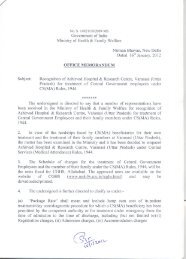manual of methods of analysis of foods - Ministry of Health and ...
manual of methods of analysis of foods - Ministry of Health and ...
manual of methods of analysis of foods - Ministry of Health and ...
Create successful ePaper yourself
Turn your PDF publications into a flip-book with our unique Google optimized e-Paper software.
METALS<br />
sample as given above) <strong>and</strong> shake for 2 min. Pipette exactly 5.0 ml solvent<br />
layer into clean, dry test tube. Dilute with 10.0 ml <strong>of</strong> CCl 4 . Mix well <strong>and</strong><br />
read absorbance ‘A’ at 540 nm.<br />
Plot ‘A’ against concentration <strong>and</strong> draw smooth curve through points.<br />
(Ref:- Manual Methods <strong>of</strong> Analysis for Adulterants <strong>and</strong> Contaminants<br />
inFoods, I.C.M.R 1990 Page 163)<br />
4.0 MISCELLANEOUS METHODS<br />
4.1 DETERMINATION OF TIN IN FOOD<br />
(Volumetric Method)<br />
Principle:<br />
The sample is ashed along with a mixture <strong>of</strong> potassium dihydrogen<br />
phosphate <strong>and</strong> magnesium nitrate as ash. The ash is dissolved in<br />
hydrochloric acid. Tin present in solution is reduced with aluminium (foil)<br />
<strong>and</strong> dilute hydrochloric acid, <strong>and</strong> titrated against KIO 3 solution (in carbon<br />
dioxide atmosphere) in presence <strong>of</strong> KI using starch as indicator.<br />
Reagents:<br />
(a)<br />
(b)<br />
Potassium dihydrogen phosphate<br />
Magnesium nitrate<br />
(c) Hydrochloric acid (Sp. Gr. 1.18)<br />
71



